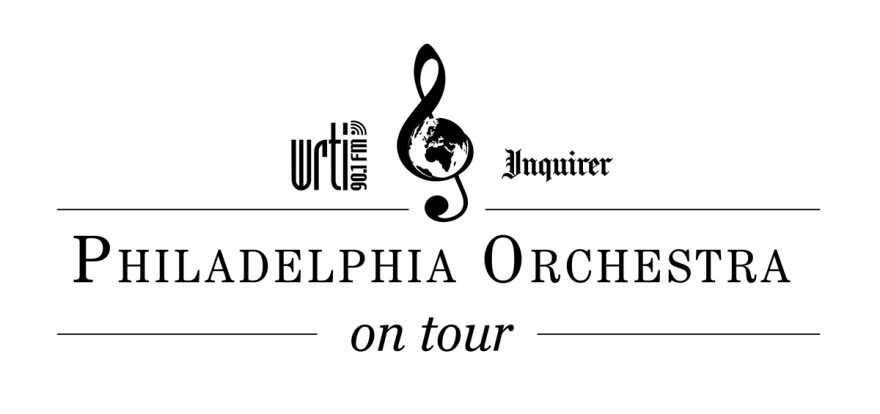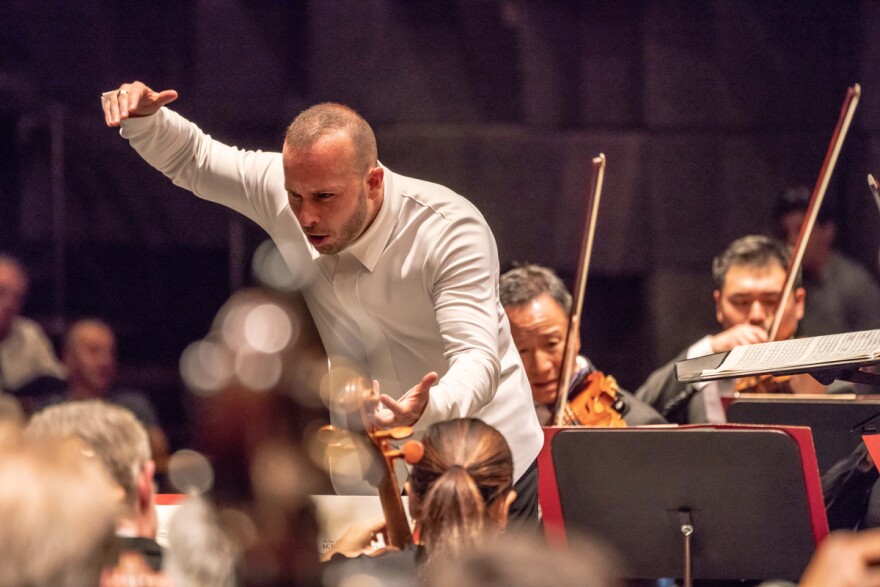HAIFA, Israel. As the unofficial cease-fire between Israel and Hamas showed signs of unraveling Sunday, the Philadelphia Orchestra played the first of three concerts on the Israel leg of its 2018 tour, in Haifa, a sunny mountainside city of nearly 300,000, the population a mix of Arabs and Jews.

This casual, Sunday night crowd at Haifa Auditorium—all ages, and often in shorts, T-shirts and flip-flops, some of them plainclothes security guards—was there for great music, even if the initial circumstances didn’t look promising amid dry acoustics and a chatty audience.
Yet the minute the music started, the auditorium became extremely still, in a performance of Brahms’ Piano Concerto No. 1 that showed the Philadelphia Orchestra’s standards were not going to slip out here in the provinces.
Haifa is a 90-minute drive from cosmopolitan Tel Aviv, where the ensemble is staying during the tour and where members were greeted upon arrival from Ben Gurion International Airport on Saturday night with glasses of champagne, courtesy of the Jewish Federation of Greater Philadelphia, before even walking in their hotel door.
Pianist Helene Grimaud and music director Yannick Nézet-Séguin showed every sign during the concert of having an intimate musical conversation—with the audience sharing it every step of the way.
One of the more vociferous front-row fans was Gary Wilson, a retiree from Mount Airy who now lives in nearby Nahariya but was a 25-year subscriber to the orchestra. “Always awesome,” he said. "They’re the best orchestra in the world."
The ovations that greeted the Brahms and Tchaikovsky’s Symphony No. 4 would suggest that many in Haifa agreed.
While Nézet-Séguin's Tchaikovsky in Vienna was more expansive and at times seethed with emotional conflict, he immediately adjusted to the dryer Haifa acoustics with swift tempos and high-impact effects, since subtlety might not fully register. During Brahms, Grimaud gave the sort of fierce performance associated with her younger self, not to mention principal timpanist Don Liuzzi making his bone-shaking presence felt from the rear of the orchestra.
When Nézet-Séguin asked the audience whether they wanted to hear “a little more music” at the end of the concert, one sassy listener replied, “A little.”
Nezet-Seguin responded with Elgar’s Salut d’Amore because “the world needs more love.” That seems to be the core of his messages to the world these days in the wake of protests that interrupted the tour’s send-off from Philadelphia on May 19 and its opening May 24 concert in Brussels.
We make music because we think it's the best language. It's the language of happiness. It's the language of freedom. It's the language of peace. —Yannick Nezet-Seguin
The Haifa performance wasn’t the only concert of the day.
First thing on Sunday morning, a quartet of musicians plus Nézet-Séguin visited the Oasis of Peace, also known Wahat al-Salam – Neve Shalom. The village is a so-called intentional community jointly established by Jewish and Palestinian Arab citizens of Israel and built on rocky hills about 40 minutes outside of Tel Aviv. The community is particularly noteworthy for its school, where children learn in both Arabic and Hebrew.
"Shalom, salam," music director Yannick Nezet-Seguin greeted the audience of primary schoolchildren. "We are inspired by what you do here. We should do it everywhere in the world. "When I started making music, I was your age, maybe younger," he continued. "We make music because we think it's the best language. It's the language of happiness. It's the language of freedom. It's the language of peace."
The children gave their own mini-concert in an ensemble consisting of Western flutes and ouds (Arabian lutes). The ensemble was formed only during the past year, and this was the first time outside ears had heard it.
Tangy Arab microtones that give the music a cursive grace—the sort seen in Arabic script—flowed from the children's fingers naturally, even though their teachers said they'd wanted them to sound as Western as possible.

Such clusters of notes can't really be written down, said Philadelphia cellist Ohad (Udi) Bar-David, who also employed micro-tones in a long, soulful solo that went to musical places that few Western musicians can inhabit.
The quartet then launched into its own arrangement of Vivaldi's Concerto for Two Cellos, called "Vivaldi Gone Wild," incorporating both Jewish and Arab melodies. The 100 or so kids cheered each piece in what will probably be the most happily uproarious event of the tour.
Returning on the orchestra bus from the school engagement to sleek, glistening, tropical Tel Aviv was reminiscent of driving into Tampa.

Even those who had been on the orchestra's 1992 Israel tour were feeling some culture shock about the city's growth. One of them is cellist John Koen, who didn't remember so many skyscrapers. "Maybe they were there before, but I really doubt it."
As much as Tel Aviv can pass itself off as what tour guides like to call "the Miami of the Middle East" -- with its buffed, tanned beach denizens and reputation for hard partying -- one need not go too far to find signs of Middle East conflict.
One of the film and radio crews on the tour went to a corner of the country bordering on Syria and Lebanon. There, they found no formal border, only a road that simply ended—and a designated minefield.
One must ask how the culture of Israel and of current events will impact Philadelphia Orchestra performances.
Already, this tour is becoming one of the best-documented tours by the orchestra in recent history. The two remaining Israel concerts, on Monday in Tel Aviv and Tuesday in Jerusalem, both will feature Tchaikovsky’s Symphony No. 4 and will be broadcast by WRTI-FM. The same piece was broadcast in two previous concerts in Europe. All four will no doubt be floating around on the internet in the coming months. Compare. Discuss.
David Patrick Stearns will report from the orchestra’s tour through June 7.
David Patrick Stearns' coverage of The Philadelphia Orchestra on Tour is made possible by a partnership between the Philadelphia Inquirer and WRTI.



